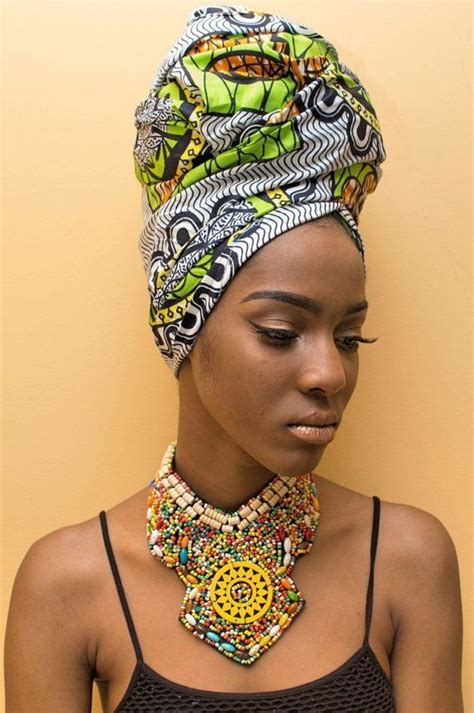African head wraps have been a symbol of cultural identity, artistry, and personal expression for centuries. Today, these vibrant and versatile accessories continue to captivate hearts and turn heads worldwide.

History and Significance of African Head Wraps
African head wraps hold profound historical and cultural significance. Dating back thousands of years, they have adorned the heads of royalty, elders, and commoners alike. Each intricately tied wrap conveyed a message, from marital status to social standing or religious affiliation.
Embracing the Art of African Head Wrapping
In recent years, African head wraps have gained widespread popularity as fashion statements. They are not only beautiful but also practical, offering sun protection and versatility. However, mastering the art of tying an African head wrap requires patience, practice, and a bit of creativity.
Step-by-Step Guide to Tying an African Head Wrap
Materials:
- African head wrap fabric (approx. 60-75 inches long)
- Scissors (optional)
- Hair clips or pins (optional)
Instructions:
- Fold the fabric: Fold the fabric in half lengthwise to create a rectangular shape.
- Place on head: Position the folded fabric on your head, with the raw edges aligned with your forehead.
- Cross the ends: Cross the two loose ends of the fabric over each other at the back of your head.
- Tie a knot: Bring the ends forward and tie them in a secure knot at the front of your head.
- Adjust and style: Adjust the wrap to your desired comfort and style by wrapping it around your head, tucking in the ends, or adding embellishments.
4 Stunning African Head Wrap Styles
1. Gele (Nigeria)
Gele is a traditional Nigerian head wrap made from stiff, intricately folded fabric. It is often worn for special occasions such as weddings and festivals.
2. Duku (Ghana)
Duku is a Ghanaian head wrap tied with a unique knot at the top of the head. It is commonly made from colorful, printed fabrics and can be dressed up or down.
3. Asooke (Yoruba)
Asooke is a luxurious Nigerian head wrap made from handwoven silk or cotton. It is often adorned with intricate patterns and is considered a symbol of status.
4. Auto Gele (Modern)
Auto Gele is a modern take on the traditional gele, featuring a pre-tied headpiece that is easy to put on and adjust. It comes in various designs and colors.
Benefits of Wearing African Head Wraps
- Cultural expression: Head wraps allow you to embrace your African heritage and express your individuality.
- Hair protection: Head wraps provide a protective barrier against sun damage, pollution, and environmental elements.
- Versatile fashion: African head wraps can complement any outfit, from casual to formal.
- Empowerment: Wearing a head wrap can be a powerful act of self-affirmation and cultural pride.
Common Questions about African Head Wraps
1. Do I need to have long hair to wear a head wrap?
No, you do not need to have long hair to wear a head wrap. African head wraps can be worn on any hair type or length.
2. How often can I wash my head wrap?
The frequency of washing your head wrap depends on how often you wear it and how dirty it gets. Generally, it is recommended to wash your head wrap every few weeks or as needed.
3. What types of fabrics are best for African head wraps?
Cotton, silk, and satin are all popular fabrics for African head wraps. These fabrics are comfortable, breathable, and drape well.
4. Where can I buy African head wraps?
African head wraps can be found at African fabric stores, online retailers, and some beauty supply stores.
Calling All Head Wrap Enthusiasts!
Whether you are a seasoned pro or a curious newbie, we invite you to join the vibrant world of African head wraps. Embrace the beauty, heritage, and empowerment that comes with wearing these remarkable accessories. Let your head wrap become a canvas for your creativity and a testament to your African pride!
